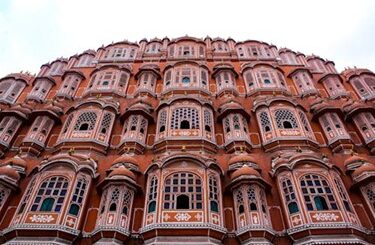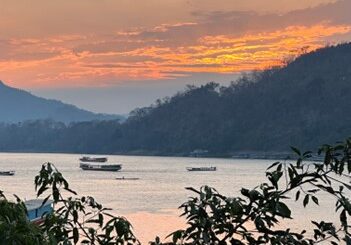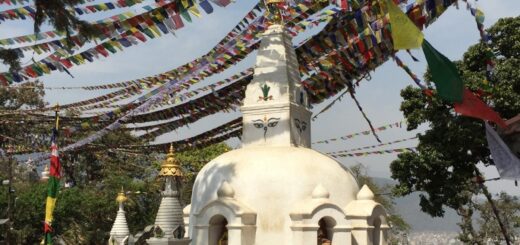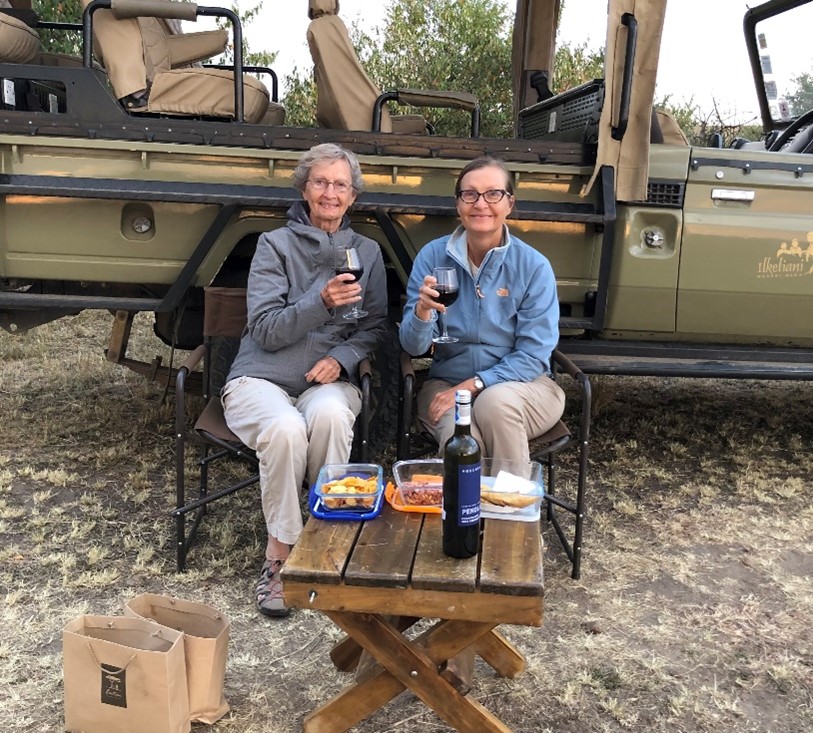Tokyo
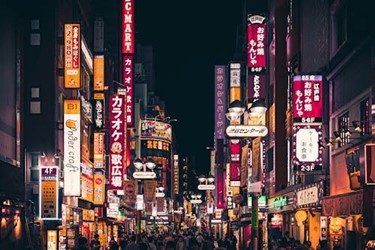
Travel Advice for Seniors: Tokyo
Tokyo is one of the places that we’ve always wanted to go, and it seems once you get there you don’t want to leave! It is very much an international city, and the people are very friendly and very polite. We had signed up for a three-week tour of Japan using local guides and local transportation. We started our tour in Tokyo and went south to Hiroshima and then back to the north island and ending in a loop back in Tokyo.
We always like to plan longer trips if we travel halfway around the world. It takes awhile to get used to the time zone change and the flights are long. Longer trips make the time worth the trouble of getting there and getting your internal clock adjusted for at least most of the trip before you have to readjust again when you get home. Besides, while Japan is a small country, there is so much history and so much to see and do!
Tokyo is the capital city of Japan, which is composed of four main islands, Hokkaido, Honshu, Shikoku, and Kyushu. Our tour made stops on three of the islands. Tokyo has about 14 million people, but while it is crowded, no one was pushy or rude.
Japan has an extremely fascinating history. From the arrival of people from China and Korea over 30,000 years ago it has had a tumultuous past with numerous natural disasters, the shogunate period and World War II. Through this all, Japan has emerged as a technological advanced country that still observes some old-world customs.
Japan’s religion is predominantly Buddhism, with an interesting mix of Shintoism and local superstitions. Shintoism is the spirituality of the present and Buddhism is concerned with the soul and the afterlife, so it is to some extent a natural fit. Buddhist temples are as frequent as Shinto shrines and individuals often have their personal shrines in their homes.
A word about tradition in Japan…be aware that you will need to take your shoes off in historical and religious places and possibly in some restaurants and certainly in people’s homes. It is polite to bow slightly when meeting someone for the first time or as a thank you. Keep your voice low and mind your personal distancing. Public affection is frowned on as is showy and immodest clothing. Don’t wear strong cologne, blow your nose in public, make prolonged eye contact or talk on speaker phone in public. The Japanese are all about respect and this extends to everyone’s personal space in this small land of many people.
Also please be aware that you will be using chopsticks to dine, so practice at home before your arrival. Also be aware that you will likely be presented with a great deal of sashimi (raw fish), some fried seafood and rice. Please don’t dip your sushi in soy sauce and don’t stab at your food with your chopsticks or point with them, and when finished, put them together and set them on the side of your plate. It is however, okay to slurp your soup right out of the bowl.
The onsen or public baths are one of the highlights and true pleasures of Japan. Usually separated by sex, protocol is to strip completely and shower completely with soap before entering. Use the small towel to sit on or put it on your head, it is not for washing. Tie your hair up if it is long and don’t put your head underwater. The onsen is for soaking. Also, don’t bring your cell phones, and remember to talk in a soft voice and respect other’s space.
Seems like a lot of rules, but really, it’s very few rules and simply using common sense and being polite.
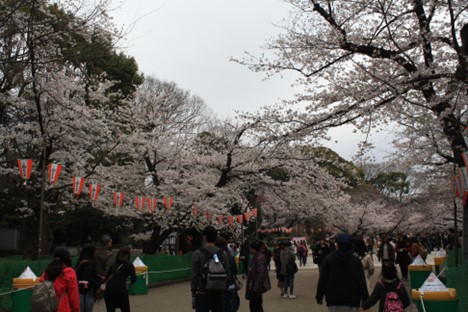
We decided to visit Japan during cherry blossom season, which occurs usually in March/April. Fortunately, our arrival time was perfect, and the cherry blossoms were in full bloom. This is a magical time in Japan. Many people take time off work to spend with their families in the parks under the blossoming trees. Yes, it is crowded in the major cities, but the atmosphere is festive, and the trees are absolutely beautiful, especially at night when many are lit up.
So now to Tokyo! We opted to fly in two days early to make the most of our time in Tokyo and to get a jump on jet lag.
The transportation system in Tokyo is very simple to use and it is easy to get around. The only trouble we had was determining where you entered and exited the Tokyo Metro subway stations at some of the major stops. A lot of people use the Metro, so it can be a little difficult to see where to go during peak times. There is also a secondary subway called the Toei Subway.
Our first full day began with a visit to Ueno Park, Cherry Blossum Central. It is hard to describe the beauty of the cherry trees in full bloom. There are many different kinds of cherry trees here in many shades of pink, and the aroma is lovely. Families here come early to set up tarps on the ground and small tables with food to prepare for visiting guests all day long to share the beauty of the day.The park has accessible parking, entrances, restrooms and walkways.
Also in the park was the National Museum of Western Art and the National Archeological Museum as well as the zoo. Check the Rodin sculpture garden in front of the Western Art Museum and spend some time with the impressive Impressionist galleries. It houses a nice collection, and the architecture of the museum is interesting as well.Both museums have accessible parking, entrances, restroom, elevators and walkways.
The National Archeological Museum is the premier museum of Japan. It is the oldest museum in Japan and houses a vast collection of Japanese artworks. predominantly ancient Buddhist artifacts, centuries-old kimonos, samurai swords and armor, and plenty of calligraphy and painted works. Allow at least a couple of hours here.
There is also a zoo here which has a variety of animals, of particular interest were the polar bears and the pandas.
The second day in Japan was a visit to the Meiji Jingu Shrine and the nearby Shinjuka Gyoen Garden in the morning. Meiji Shrine is a Shinto shrine, dedicated to the deified spirits of Emperor Meiji and his wife, Empress Shōken. The shrine is well-known for its huge torii gate and serene gardens and is home to many traditional Shinto weddings. We had the luck to watch a couple having their wedding pictures made here. The National Gardens were also a wonderful sight with all of the cherry blossom trees in full bloom.The Shrine has accessible parking, entrance, walkways and restrooms. The Garden is accessible but walkways are pebbled and there are some steps.
In the afternoon we visited the Hama RIkyu Palace Garden for tea, followed by a Sumida River tour. The Gardens are unique in that they fill and empty with sea water with the tides and are located in the middle of a busy city center. The Nakajima Tea House has a selection of teas and sweets and reservations can be made in advance for something more elaborate.The Gardens have accessible parking and restrooms, but only some of the paths are accessible due to steps, bridges and steepness. The Tea house is not accessible.
The Sumida River tour was a great way to see part of central Tokyo and hear about some of the architecture and sights along the way. We did a round trip, but many people got off in the center of town to see some of the famous temples there.
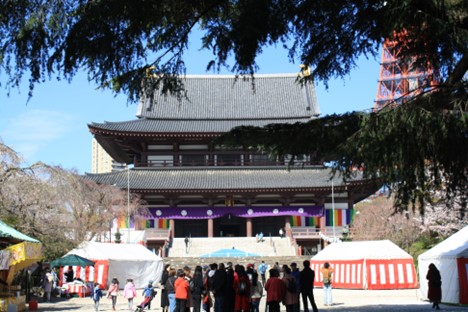
The first day of the start of the “official tour” began with a trip to the Tokyo Tower Observatory and the shrines on the way. Tokyo Tower gave us a good overview of the city. The Cherry Blossum festival atmosphere continued at the shrines with carp windcatchers representing male children flying above the walkways and a shrine area for memorials to children.The tower has accessible entrance, restroom and elevator, though the hill to the entrance is fairly steep. They have wheelchairs for rent.
The shrine to children featured statues that represent Jizo Bosatsu, a Buddhist deity who protects children, especially those who were unborn, miscarried, or stillborn. We saw several of the memorials to children around Japan and all had a bright colored crocheted cap and many also had vases of flowers.
After a lunch of Kushiage (battered and fried meats/vegetables), we headed to the famous Ginza area for a bit of shopping. While we were there we lucked upon the unveiling of a new symbol for the new Japanese imperial era. The new era is called Reiwa and means Fortunate Harmony. A very famous artist was presenting the calligraphy symbol and there was a large crowd on hand.
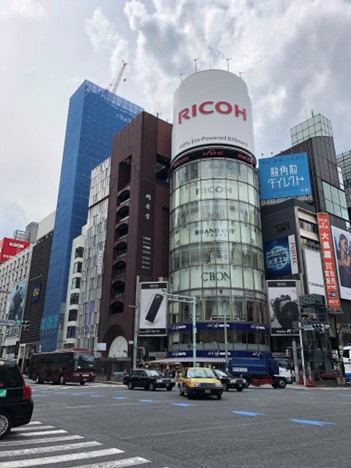
The afternoon we also toured the Asakusa area and Nakamise-dori street. The area was bustling with activity and is one of the oldest shopping areas, developed in the 17th century. It was a treat to go back in time and walk the pedestrian friendly area poking around in the shops. We purchased some red bean cakes that were a specialty of the area and a traditional festive dish. They are not really very sweet but were worth a try.
A major attraction in this area is the Senso-ji Buddhist Temple, Tokyo’s oldest-established temple and one of its most significant. It is dedicated to the bodhisattva of compassion, Kannon and is a beautiful temple and flawless five story pagoda. Be sure to notice the offerings of rice that adorn some of the walkways and the incense offering areas. The Asadausa Shrine is a Shinto shrine that is also on the same grounds.The Temple has accessible entrance, restrooms, pathways and elevators.
Later that afternoon, we made time to see some Kabuki Theater. There are several very famous venues for Kabuki in Tokyo and we attended the performance at the National Theatre. Kabuki is a traditional art over 400 years old, which features stylized acting, song and high drama. The costumes are exquisite, and the scale and finish of the props is incredible. We didn’t really understand the stories and legends that were playing out, but the whole experience was overwhelming in its glamour. They offered a reduced time period and a full time period for the whole show. We took the reduced time which was adequate.The Theatre has accessible entrance, walkways, ramps and designated seating.
It was a whirlwind tour through Tokyo, but we were just getting started with our Japan tour…next up was travel to Yoshiike Ryokan and onsen on our way to Hakone. The Ryokan is accessible, but you should call in advance. If you have time to make a day trip from Tokyo to this open-air hot springs onsen and its luxurious gardens, you will be rewarded with a wonderful spa experience, exceptional food and view of their carefully sculpted gardens. The Japanese put a great deal of work into their gardens and every rock and frond is intentional. The outdoor hot springs pools are numerous with incredible views of the gardens. It is public, so a swimsuit is a must.
Next up, Takayama on our way to Kyoto!
Where we stayed: Shiba Park Hotel. Breakfast included. Very nice hotel, convenient location. Convenience store right around the corner. Accessible parking, entrance, restroom and elevators, but no accessible rooms at the moment.
How we got there: Flight from US to Tokyo.This was part of a three-week small group tour through Japan, starting in Toyko, traveling south to Hiroshima and then back to the north island and ending in a loop back in Tokyo.
General Accessibility Information: See notes above. Japan is pretty accessible. Major attractions have accessibility features and most new buildings and hotels are accessible. Much transportation is also accessible. See Accessible Japan for specifics. Call in advance to verify and make specialty arrangements.See our sections on specialty apps and accessible travel for more on accessibility assistance.

